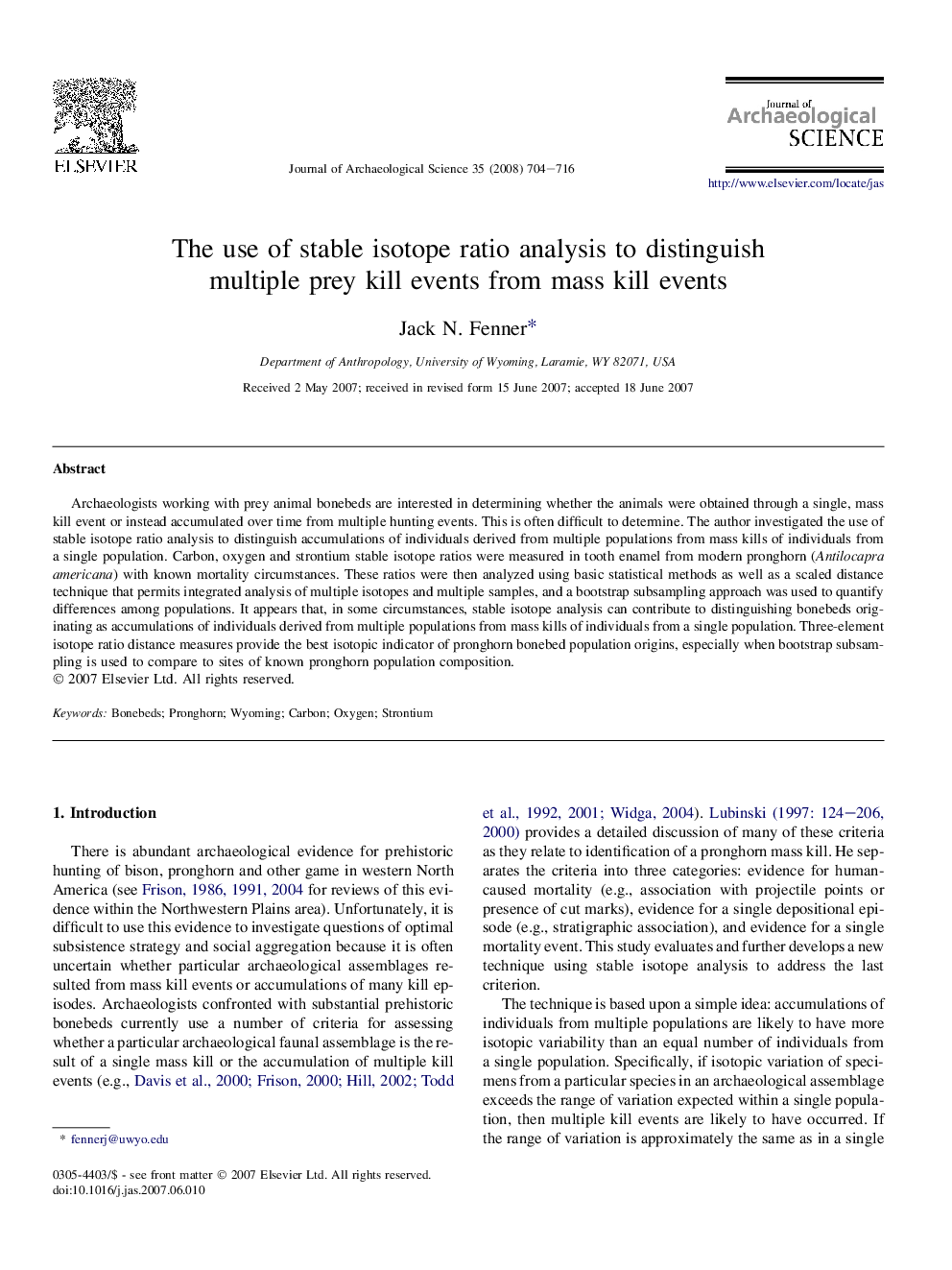| کد مقاله | کد نشریه | سال انتشار | مقاله انگلیسی | نسخه تمام متن |
|---|---|---|---|---|
| 1037535 | 943932 | 2008 | 13 صفحه PDF | دانلود رایگان |

Archaeologists working with prey animal bonebeds are interested in determining whether the animals were obtained through a single, mass kill event or instead accumulated over time from multiple hunting events. This is often difficult to determine. The author investigated the use of stable isotope ratio analysis to distinguish accumulations of individuals derived from multiple populations from mass kills of individuals from a single population. Carbon, oxygen and strontium stable isotope ratios were measured in tooth enamel from modern pronghorn (Antilocapra americana) with known mortality circumstances. These ratios were then analyzed using basic statistical methods as well as a scaled distance technique that permits integrated analysis of multiple isotopes and multiple samples, and a bootstrap subsampling approach was used to quantify differences among populations. It appears that, in some circumstances, stable isotope analysis can contribute to distinguishing bonebeds originating as accumulations of individuals derived from multiple populations from mass kills of individuals from a single population. Three-element isotope ratio distance measures provide the best isotopic indicator of pronghorn bonebed population origins, especially when bootstrap subsampling is used to compare to sites of known pronghorn population composition.
Journal: Journal of Archaeological Science - Volume 35, Issue 3, March 2008, Pages 704–716